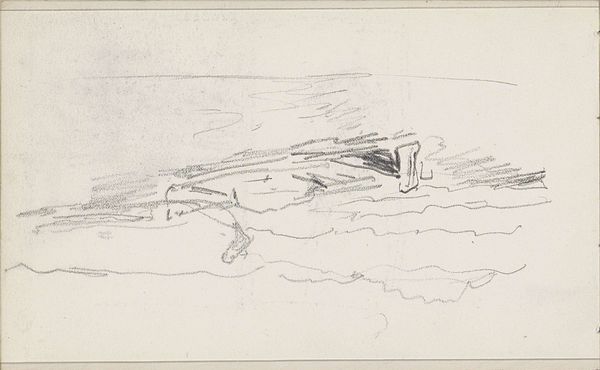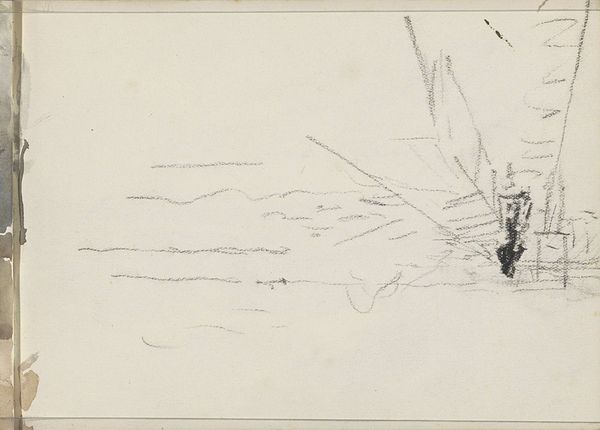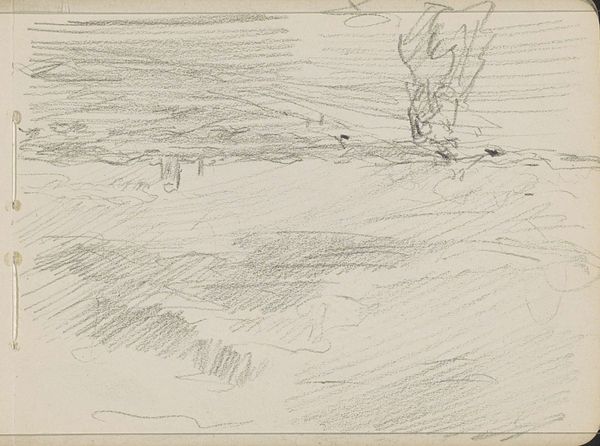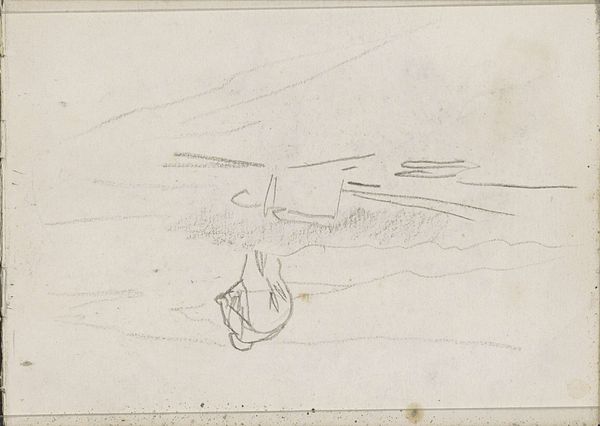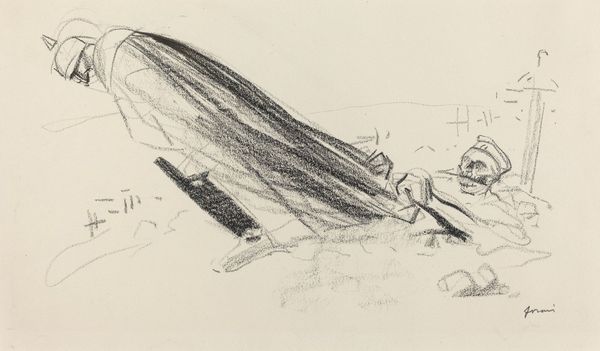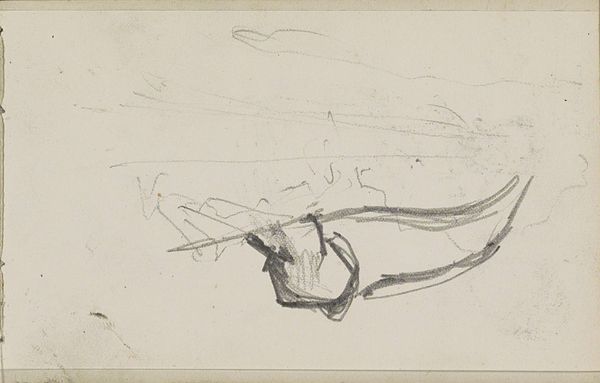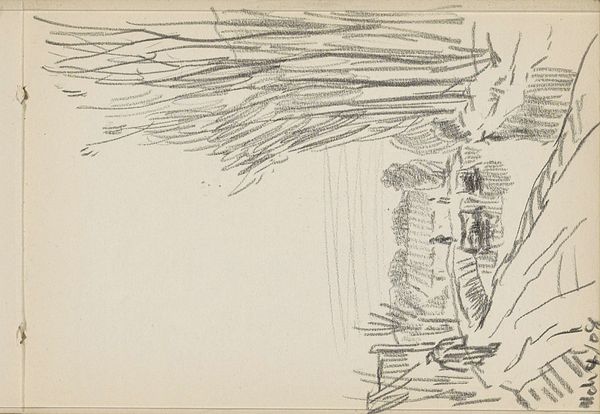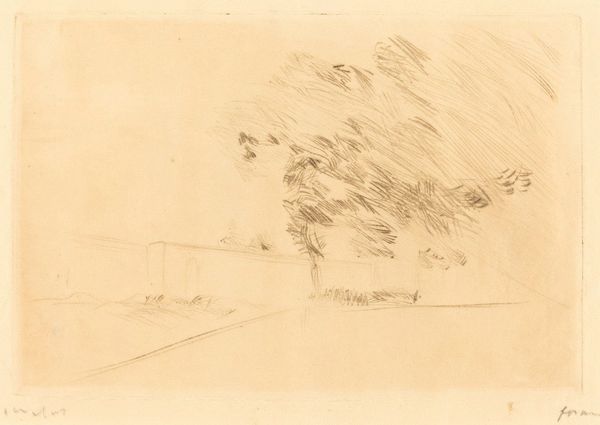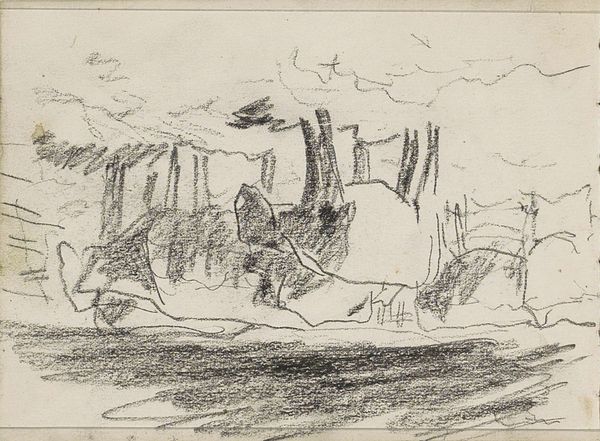
Copyright: Rijks Museum: Open Domain
Editor: This is Anton Mauve's "Wandelaar in een landschap," created sometime between 1848 and 1888. It's a pencil and pen sketch currently housed in the Rijksmuseum. I’m immediately drawn to the stark simplicity of the lines, almost skeletal in their form. What elements of composition stand out to you in this piece? Curator: The composition is intriguing precisely because of its seemingly unfinished quality. Consider the distribution of tonal values: the concentrated darkness of the figure is offset by the atmospheric rendering of the landscape. Note how the horizontality of the land is created by the energetic strokes in the foreground against a softer graduation of tones in the background. Do you see a dynamic relationship emerging between these formal elements? Editor: Yes, I notice how the density of the figure almost grounds the entire composition, preventing it from dissolving entirely into abstraction. The stark contrast keeps the eye moving. Is there significance in what is not drawn here? Curator: Indeed. The negative space surrounding the figure is just as crucial. It emphasizes the figure’s isolation. The lines, even when seemingly random, adhere to principles of pictorial structure. Look closely, how does the artist imply space, depth or movement with minimal marks? Editor: The way the lines fade suggests distance, especially in the "sky". And the denser strokes on the ground hint at movement of air or maybe just add texture, bringing the foreground forward. I wouldn't have noticed it if you hadn't prompted me. Curator: Precisely! These formal considerations allow us insight to the work that goes beyond just mere representation. Focusing on such fundamental elements lets us appreciate how seemingly simple means create complex relationships within the pictorial space. Editor: It makes you appreciate how much detail can be suggested with so little. Thanks!
Comments
No comments
Be the first to comment and join the conversation on the ultimate creative platform.
